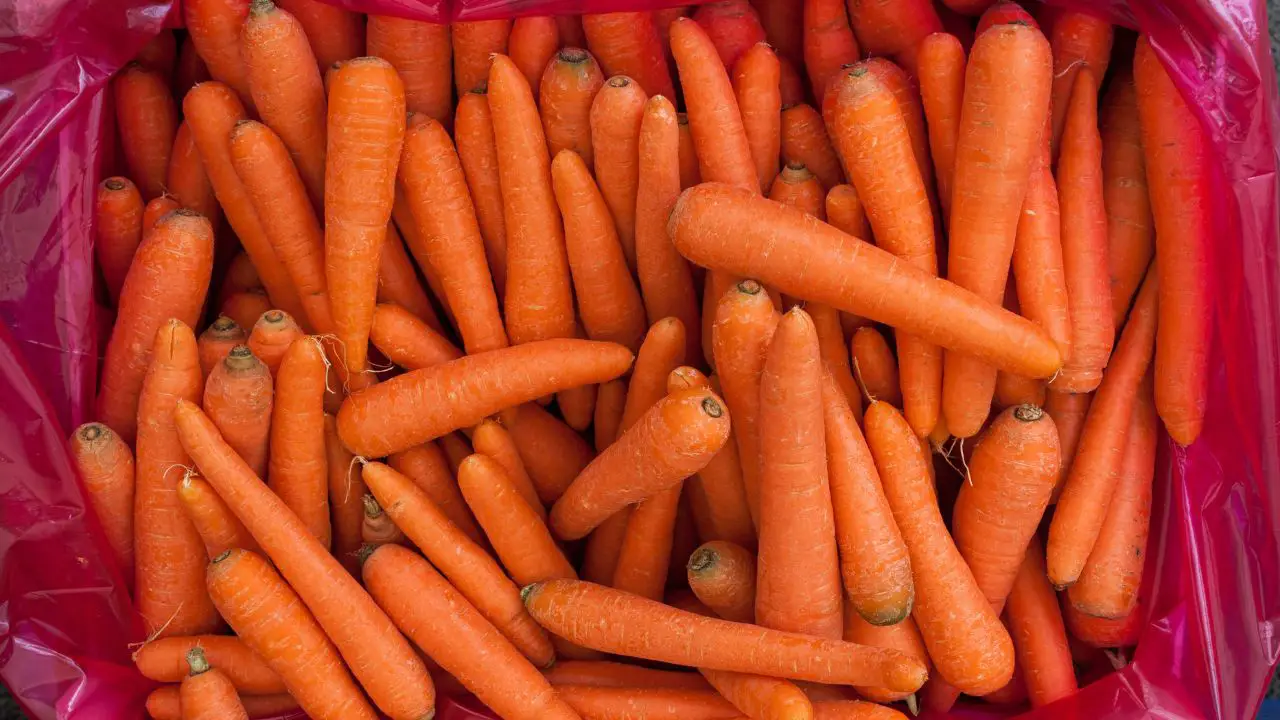Are you looking for a creative and effective way to store carrots without refrigeration? Look no further than these simple solutions! With these 10 easy storage methods, you can protect your carrots from spoilage and keep them fresher and usable for longer.
9 Creative Ways To Store Carrots Without Refrigeration

Below I will cover 9 simple methods I have often used to store fresh carrots without using the refrigerator. These storage methods are certainly better than just leaving the carrots in the warm room temperature kitchen, where they won’t last more than 5-7 days.
Don’t Have a Fridge? No Problem! Here’s How to Store Carrots Without Refrigeration!
1. Root Cellaring
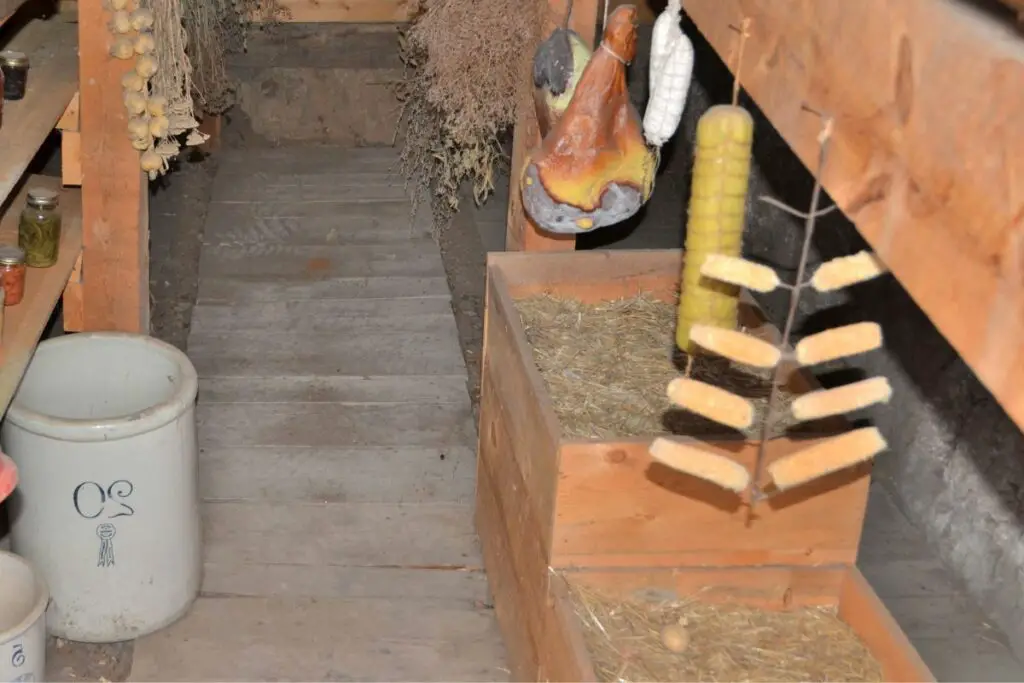
Carrots can be stored in a vermin-free root cellar basement or a shed in a cool, dark, and frost-free place. Put a thin insulation layer on the bottom of a large plastic container that allows for a bit of ventilation or a cardboard box.
I often use sand for the insulation, but you can also use shredded newspaper, dry leaves, sawdust, hay, or a mix of the above. Then add the single layer of clean but not washed carrots, put another layer of insulation on top of the layer of cartons, and then repeat the process and cap it all off with a final layer of insulation.
Carrots can easily last for several months in a cold root cellar without refrigeration. It’s important to check the carrots regularly for spoilage or damage. If you notice any soft or discolored carrots, remove them immediately to prevent them from affecting the rest of the batch.
2. Storing In Vegetable Sacks
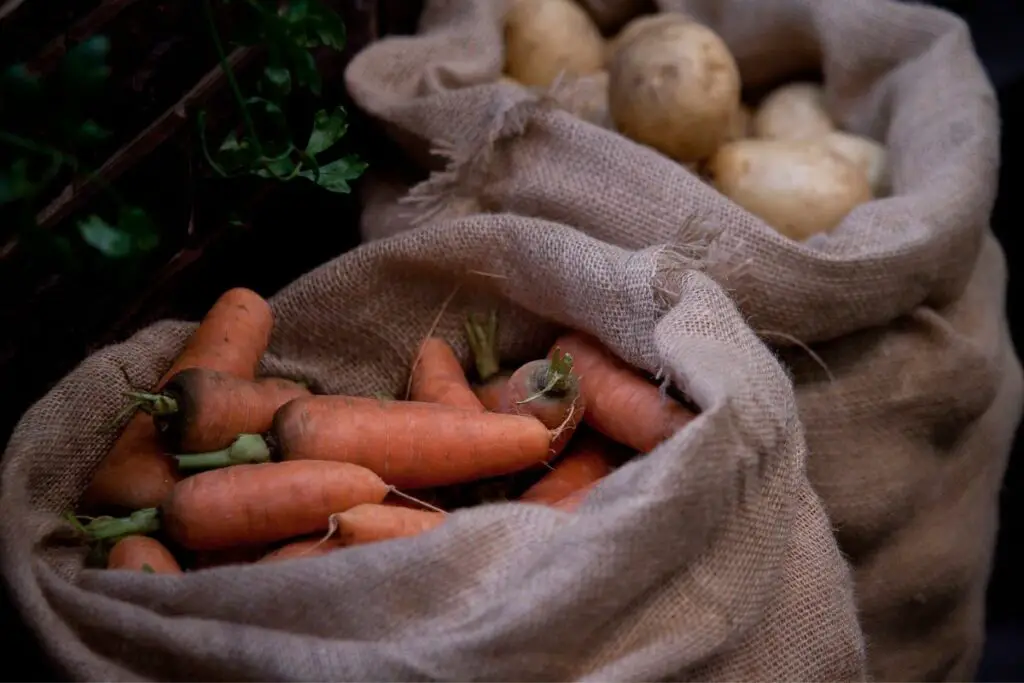
Keep carrots fresh and crisp by storing them in vegetable sacks explicitly designed for root vegetables like carrots, potatoes, carrots, turnips, parsnips, beetroot, and swedes.
The tough, natural woven fabric makes vegetable sacks a good option for storing carrots. The specially made fabric allows air to circulate, preventing condensation from building up inside the bag.
Keep the bag in a cool place like a cellar or a basement. If you are worried about the pest, hang them off the ground or keep the bags on the shelves.
Carrots can last for several months in a cold root cellar stored in vegetable bags.
3. Fermenting

To make Lacto-fermented carrots, you will need kosher or non-iodized salt, filtered water, and carrots.
- First, dissolve the salt in the water.
- Wash, peel, and cut the carrots into finger-size sticks, cubes, or coin shapes, then pack them tightly into clean glass pint jars.
- Pour the salt brine in the jar over the carrots, making sure they are entirely covered, then cover the jars with lids that are not tightly on.
- Leave them at room temperature for 24-48 hours.
- Check on the ferment after 24 hours and transfer the jars to the cool cellar or a shed once the carrots are actively fermenting.
The fermented carrots will be ready to eat 1-2 weeks later.
Like pickles, you can enjoy them straight out of the jar or use them in recipes.
Fermented carrots will generally last for several months without refrigeration as long as they are stored in a cool, dark place with an airtight seal.
4. Pickling
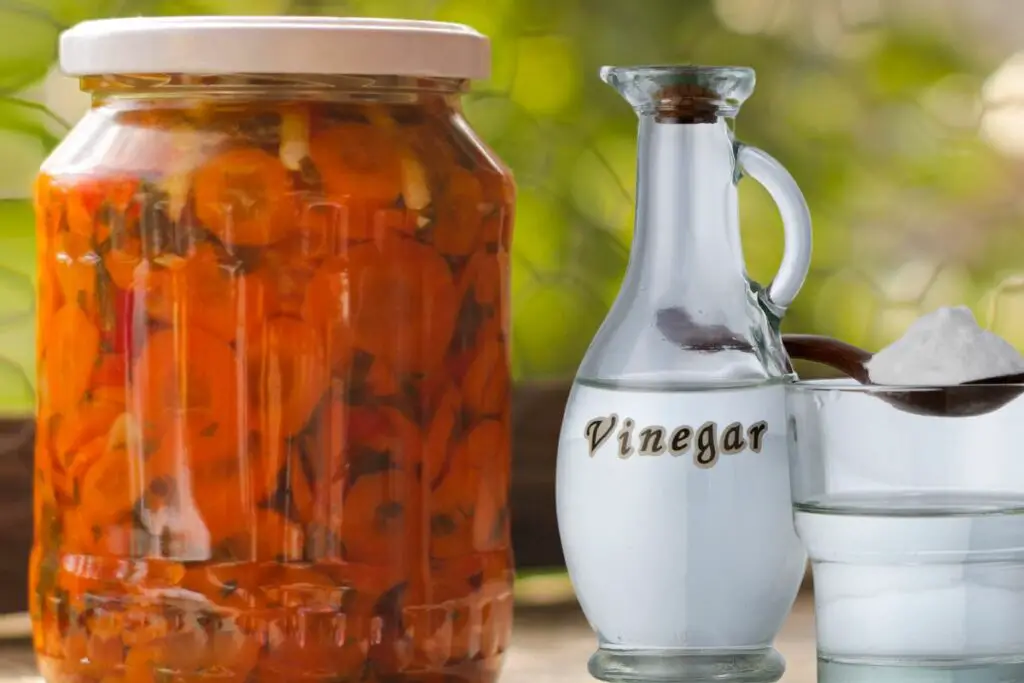
Carrots can be pickled by preserving them in a vinegar and sugar solution.
- To make quick pickled carrots, slice 1 pound of carrots into thin coins and place them in a heatproof container or jar.
- In a pot, combine 1 cup apple cider vinegar, 1/4 cup sugar, 2 tablespoons kosher salt, 1 tablespoon black peppercorns, and 1 tablespoon mustard seeds with 1/2 cup water.
- Bring the mixture to a boil and pour it over the carrots.
- Let the carrots cool to room temperature, then cover them with a lid and store them in a cool and dark place like a cellar or pantry.
Pickled carrots that have been properly prepared and processed will last for several months without refrigeration. However, it is generally recommended to store pickled carrots in a cool and dark place to extend their shelf life and maintain their quality.
5. Drying

Carrots can be dehydrated or dried to extend their shelf life.
- To dehydrate carrots, the first step is to wash, peel, and remove the greens from the carrots.
- Next, cut the carrots into the desired shape, such as shreds, coins, or dice.
- The carrots should then be blanched for 2 minutes if they are shreds or 4 minutes if they are coins or cubes.
- After blanching, the carrots should be dried at 125°F (51°C) in a dehydrator for 6-10 hours if they are shreds or 8-18 hours if they are coins or cubes.
- To test for dryness, pick a few pieces and allow them to cool for five minutes. Carrots are dry when they are leathery and break easily.
- After drying, let them cool and store them in a glass jar or a container with a lid. The carrots should be conditioned by shaking the jar once a day for a few days to check for sticking, moisture buildup, or mold.
- If there are signs of moisture or mold, the carrots should be put back in the dehydrator or thrown away.
- Finally, store the dehydrated carrots in an airtight container in a cool, dry place. for long-term storage.
Dehydrated carrots will last for several months in the pantry without refrigeration as long as they are stored in a dry, airtight container. The lack of moisture in the dehydrated carrots prevents spoilage, allowing them to have a longer shelf life.
6. Freezing
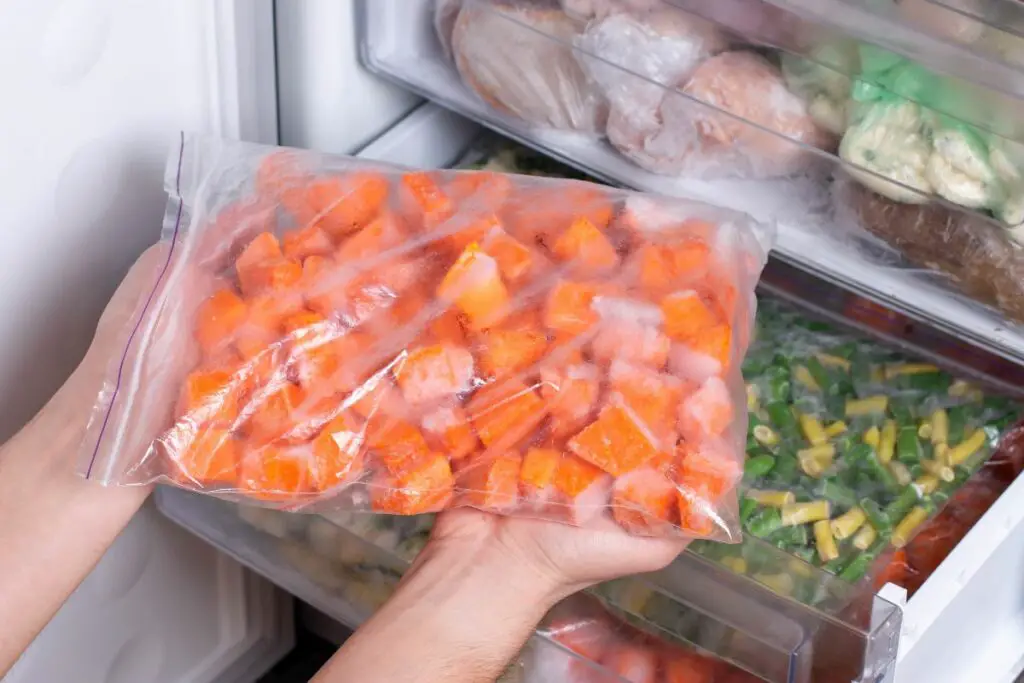
Having a deep freezer can be a great way to store food for the long term. Freezing carrots is an easy and efficient way of preserving them, which also helps keep their nutritional value intact.
- To freeze carrots, start by washing and cutting them into desired shapes.
- Next, blanch the carrots by boiling them for 3-5 minutes, then cooling them in a bowl of iced water for the same amount of time.
- Drain and pat the carrots dry, then place them on a tray and freeze until solid.
- Transfer the frozen carrots into labeled resealable freezer bags, removing excess air before sealing.
- Blanched and frozen carrots will last for up to 12 months in the freezer as long as they are properly stored.
To extend their shelf life, storing frozen carrots in a sealed, airtight, freezer-safe container or bag is important to prevent freezer burn.
I have also frozen carrots for almost two years by vacuum-sealing them after blanching.
7. Canning

Canning is an excellent option for those looking to preserve the bounty of their summer gardens or local farmers’ markets. Not only does it help keep delicious produce like beans, carrots, and tomatoes fresh and tasty for months or even years afterward, but it is also a great way to save money.
- To can carrots, remove the tops and tap root and wash the carrots thoroughly.
- Peel the carrots, slice or dice them if desired, and rinse again with water.
- Put the carrots in a large pot and cover them with water.
- Once the water is boiling, reduce the heat, and simmer the carrots for 5 minutes.
- Pack the carrots into hot one-quart or one-liter canning jars, leaving a 1-inch head-space and adding 1/2 tsp of canning salt to each jar.
- Fill the jar with hot water, leaving about 1-inch head space.
- Clean the jar rim and center a hot lid on it, tightening it to finger-tight.
- Place the jar in a pressure canner and add 3 inches of hot water into the canner.
- Place the lid on the canner and let the pressure rise up to 10 lbs.
- Pressure can the carrots for 30 minutes and allow the canner to drop down to zero pressure, remove the lid and let the jars stay for 15 minutes before removing them from the canner.
- Leave the jars uninterrupted for 24 hours and check to ensure they are sealed.
- Remove the rings, wipe the jars with a wet cloth, label them, and store them in a cool and try place like a pantry or a cellar.
Pressure-canned carrots that are properly sealed in jars will maintain their quality in the pantry for 12-18 months. However, it is important to follow proper pressure canning procedures to ensure the safety and quality of the carrots.
8. Covering With Soil
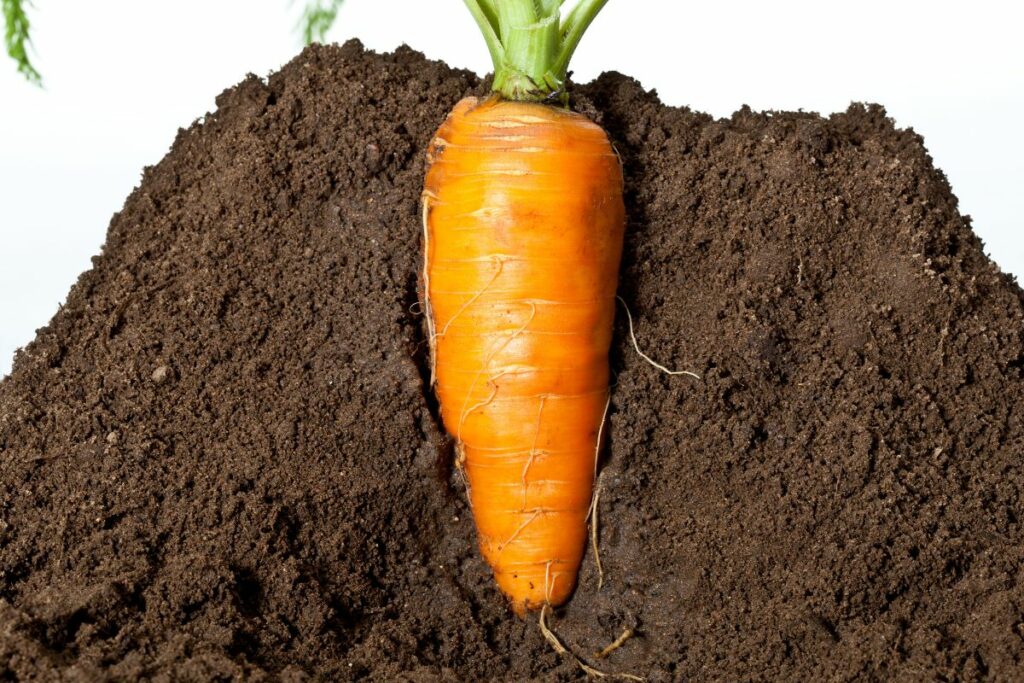
Carrots can tolerate cold temperatures quite well and be left in the ground and covered with a layer of soil to protect them from frost and keep them fresh. This method works best in areas with a mild winter climate.
Alternatively, store carrots over the winter by burying them in the ground.
First, choose a location with well-draining soil and protection from extreme weather. Dig a hole at least 6 inches deep and wide enough to fit the carrots comfortably, trim the greens to 1 inch, and gently brush off excess dirt.
Place the carrots in the hole and cover them with straw, shredded leaves, or burlap for insulation. and cover the hole with dirt.
When the ground has thawed in the spring, carefully dig up the carrots and use them as desired.
9. In Loosley Sealed Paper Bag
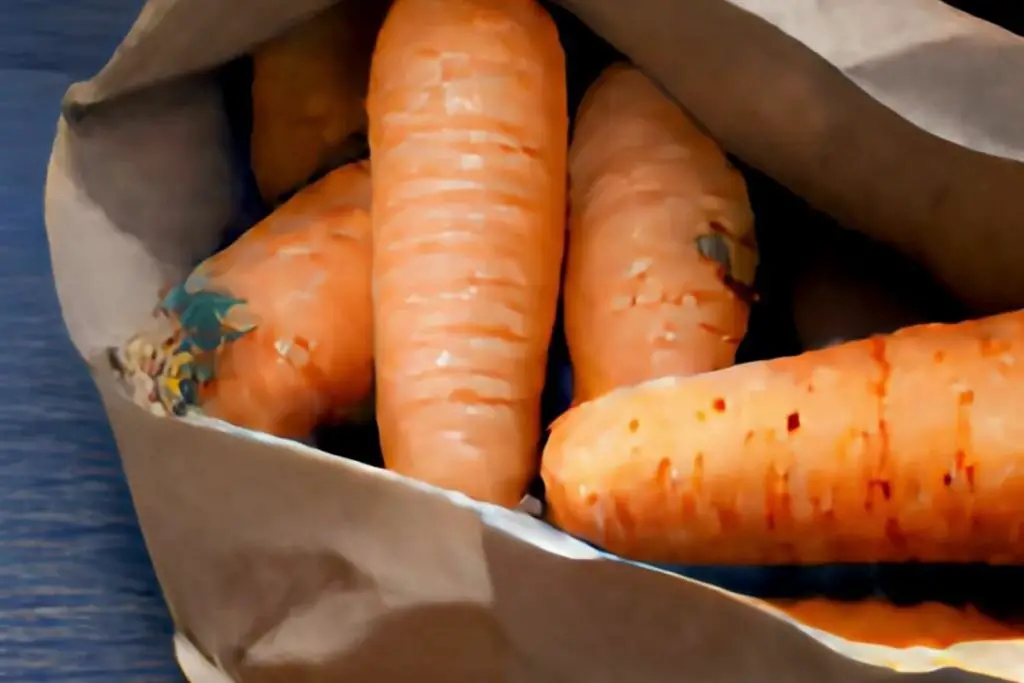
If you bought fresh carrots from the supermarket that came in a plastic bag, it is generally better to remove carrots from the plastic bag for storage. Carrots need air circulation to stay fresh and prevent them from getting slimy or spoilage. Leaving them in a sealed plastic bag can cause them to become soft and mushy quite fast at room temperature.
If you don’t have a fridge or it is too full, remove the carrots from the plastic bag and store them in a loosely sealed paper bag or poke some holes in the plastic bag to allow for air circulation.
Overall, the best way to store fresh root vegetables to extend their shelf life is to keep them in a cool, dark place with plenty of air circulation. This will help them stay fresh and crunchy for longer.
Fresh carrots will generally last 5-7 days without refrigeration if left on the kitchen counter at room temperature. However, keeping them away from direct sunlight and heat is important to prevent them from spoiling or dehydrating.
Carrot Storing Mistakes To Avoid
Unfortunately, many people make mistakes when storing carrots which can cause them to go bad faster than if they were stored correctly. Below I will look at the most common mistakes made when storing carrots that should be avoided.
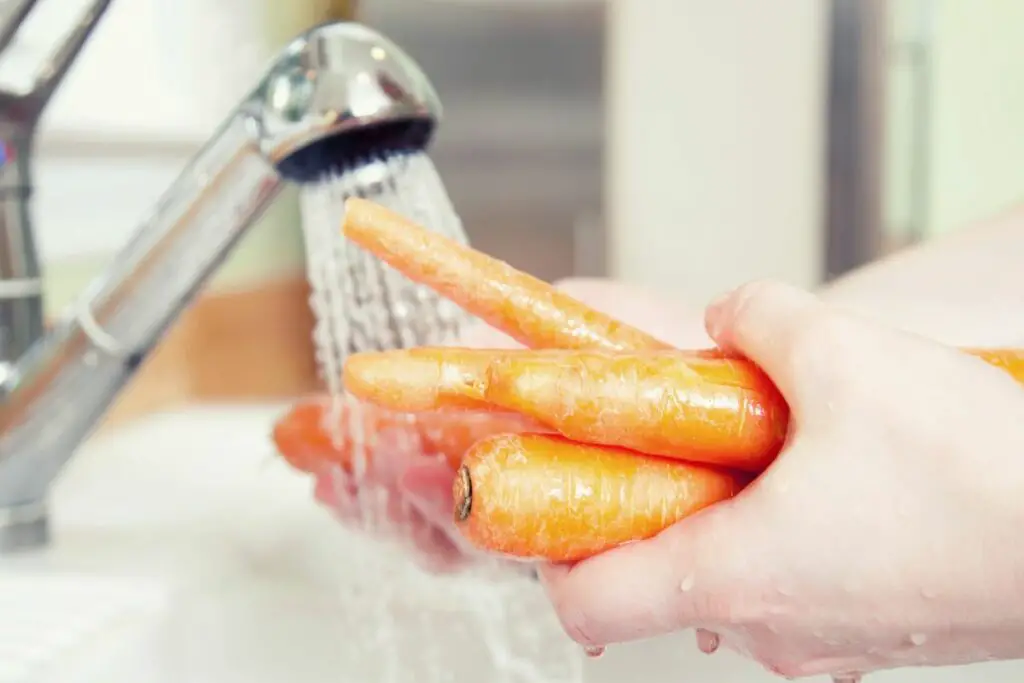
- Washing the carrots before storage.
- Wrapping them in foil or other non-breathable material.
- Storing the carrots in a warm, damp, humid environment.
- Leaving the carrots in direct sunlight.
- Not cutting off the greens.
- Placing the carrots in a closed container without ventilation.
- Stacking the carrots in a big pile without any support or separation.
- Using plastic bags or containers without proper ventilation.
- Storing carrots that have already started to spoil.
- Not regularly checking the carrots for signs of spoilage or decay.
How To Store Baby Carrots Without The Fridge?

Baby carrots are peeled and washed before being packed in a plastic bag and sold in stores. This means they are more prone to spoilage than whole, unpeeled carrots.
To extend the shelf life of baby carrots, it is best to store them in the fridge, where they can last up to 2 weeks. However, one of the best ways to store baby carrots if you don’t have a fridge is in a jar of cold water which will give you a similar sort of storage time.
- Fill a jar with cold water and place the baby carrots in the jar.
- Make sure the carrots are completely submerged in the water.
- Cover the jar with a lid or plastic wrap and store it in a cool, dark place like a pantry or cupboard.
- Change the water every 2 days to prevent it from becoming stagnant and to keep the carrots fresh.
- If you don’t have a jar, you can also store the baby carrots in a container filled with cold water.
This method works best for short-term storage and is not a long-term solution for preserving baby carrots. For longer storage, it is recommended to keep them in a cooler with ice.
Signs That Your Carrots Have Gone Bad
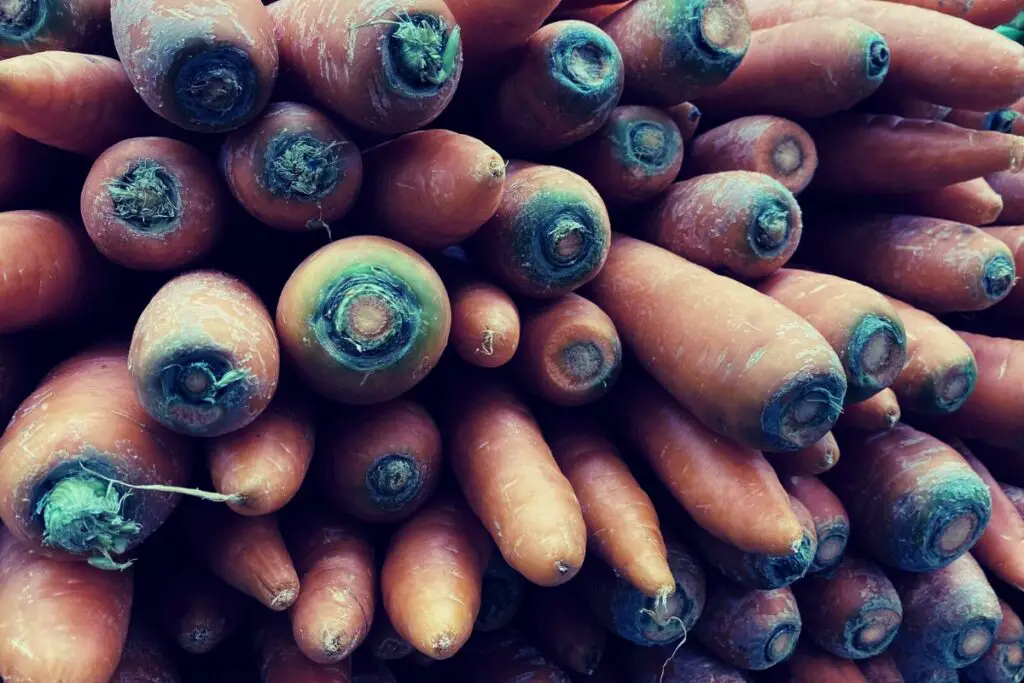
Fresh carrots should be firm and crisp, with smooth and unblemished orange-colored skin. However, if you notice any of these following signs, then your carrots are most like gone bad.
Here are some signs that carrots may have gone bad:
- Shriveled or soft carrots: Carrots that are dried out or have become soft and mushy could still be edible but are past their prime.
- Sliminess: If carrots have a slimy or slippery texture, this could be a sign that they are starting to rot and should be thrown away.
- Discoloration or mold: If carrots have turned an unusual color or have dark spots or visible developed mold, they should be discarded.
- Off odors: Carrots that have an off smell, such as a sour or musty smell, may be past their prime and should be thrown away.
- Sprouting: If carrots have started to sprout, they are still edible but may be less sweet and flavorful.
Frequently Asked Questions
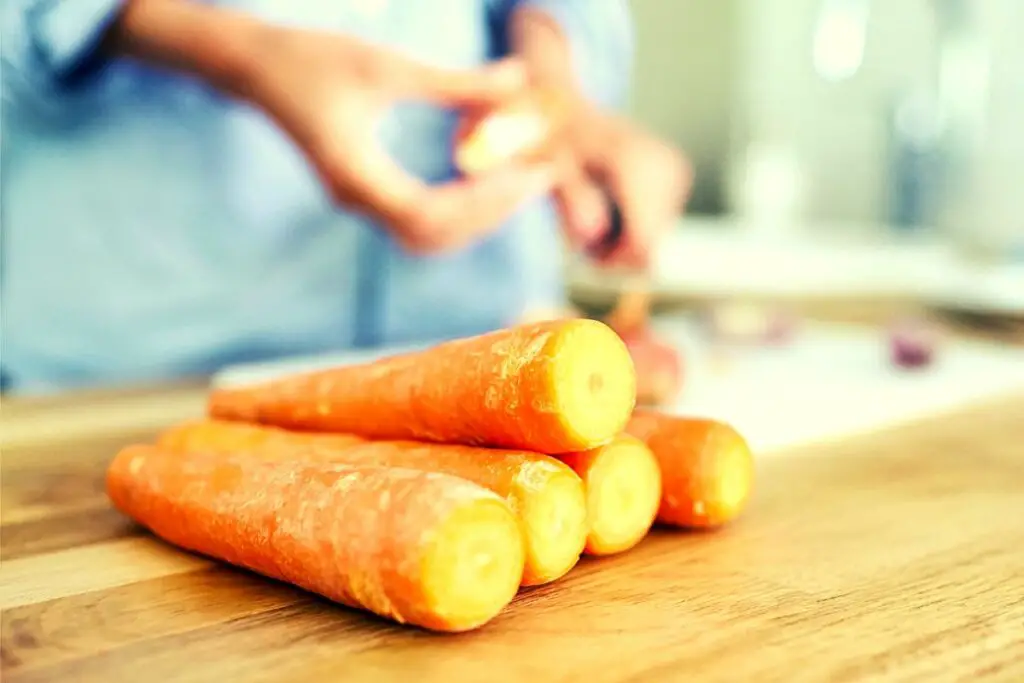
Can I store fresh carrots at room temperature?
Carrots are best stored in the refrigerator or cool storage place to maintain freshness and crunchy texture. They can be kept at room temperature for a short time, such as when preparing a meal, but should be returned to the refrigerator as soon as possible. If storing carrots at room temperature for a longer period, they are likely to start to dry out and lose their crispness after 4-5 days, so it is always best to store them in the refrigerator or a cold cellar whenever possible.
How to revive limp carrots?
When carrots start to lose their moisture, they become limp and soft. To restore firmness, cut a thin slice off the bottom and soak the carrots in ice water for about 7-8 hours. This could help firm up the carrots and restore some of the crunches.
Are limp carrots still good to cook with?
Limp carrots that don’t have any sign of mold or sliminess are still edible, but they may not taste as good as fresher carrots and may not hold their shape well when cooked. They may need to be cooked for a shorter time or used in a different recipe that doesn’t require them to hold their shape. It is generally best to use fresher carrots for the best flavor and texture.
Should I trim off the green tops of carrots before storing them?
Trimming off the green tops of carrots before storing them in the refrigerator is generally recommended. The greens on carrots can draw moisture away, causing them to wilt and become less crisp. By removing the greens before storing the carrots, you can help extend the carrots’ shelf life and keep them fresher for longer.
In Summary
Storing your carrots without a refrigerator is totally feasible. The key is to store them in a cool, ventilated place away from direct sunlight. Some of the storage methods I covered above can extend the carrot’s shelf life for up to a year of purchase or harvest.
But finally, my top tip if you are stuck with too many carrots. Don’t let them go to waste! You can turn them into something delectably tasty with just a few simple steps – like this deliciously moist carrot cake.
